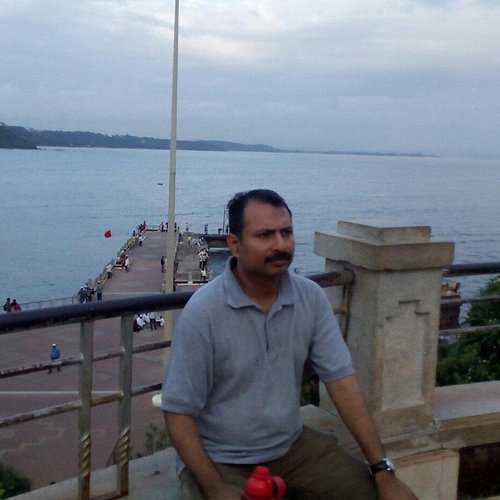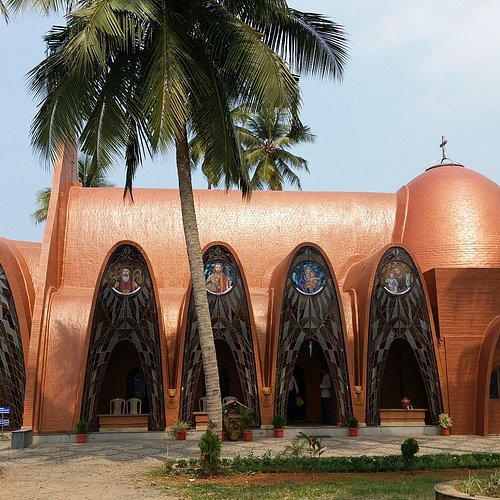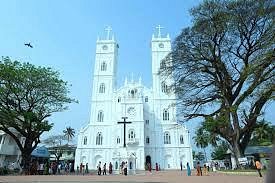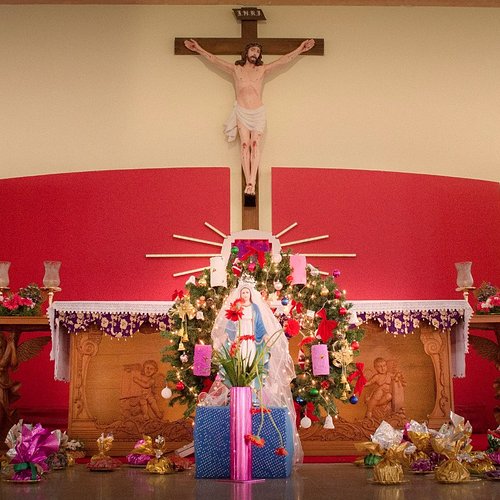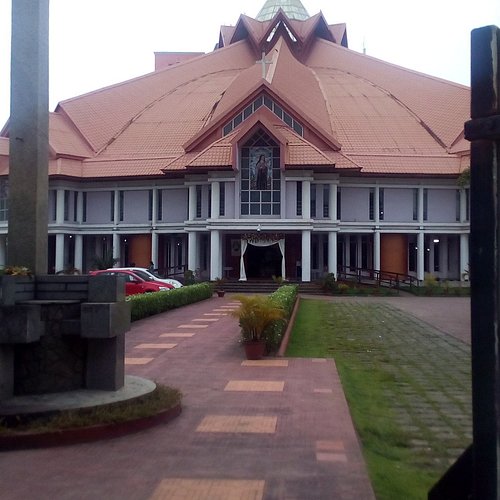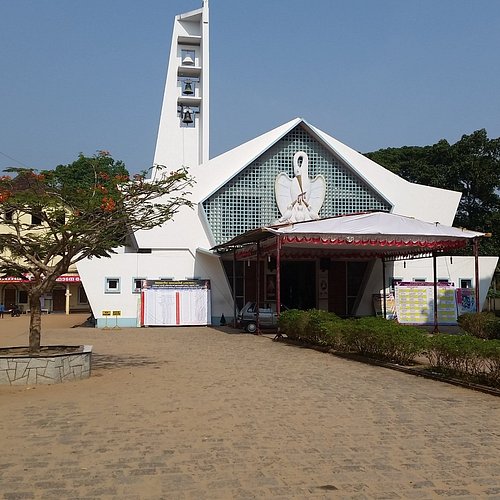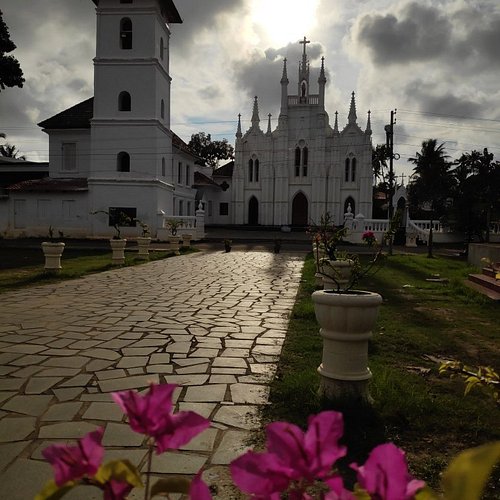Things to do in Kochi (Cochin), Kerala: The Best Churches & Cathedrals
A blending of several small villages on the southwestern coast created the current incarnation of Kochi (or Cochin), where sunset strolls, sampling fresh fish from seaside vendors and boat rides through the islands just offshore top visitors' to-do lists. Art centers showcase the traditional dance, Kathakali. European influences are seen in the 16th-century Portuguese-built churches and forts, while the mark of early Chinese traders is visible in the unusual fishing nets dotting the shoreline.
Restaurants in Kochi (Cochin)
1. Karingachira Church
2. St. George Syro-Malabar Catholic Church of Forane
3. St. George Orthodox Koonan Kurish Old Syrian Church
Overall Ratings
5.0 based on 16 reviews
The St. George Orthodox Koonan Kurish Old Syrian Church at Mattancherry town of Kochi (Cochin ) better known as the Koonan Kurishu Pally entered the annals of history following the oath taken by St Thomas Christians of Kerala in AD 1653, protesting against the the attempt to impose the hegemony of the Roman Church by the Portuguese . The Indian Church (Malankara Church ) was established by Apostle St Thomas ( Mar Thoma ) in AD 52. This indigenous Church of Malabar/Malankara followed the faith and traditions handed over by the Apostle St. Thomas. Saint Thomas Christians were administratively under the single native dynastic leadership of an Archdeacon a native ecclesiastical head with spiritual and temporal powers. Portughese arrived India in AD 1498 , were surprised to find the presence of St Thomas Christians in India, but Portuguese were unhappy that native Indian Christians were not under Rome . With the help of Portuguese army and Portuguese missionaries they started luring and threatening native Christians to bring them under Rome.They succeeded in their efforts in 1599 with the `Synod of Diamper'. The representatives of various parishes who attended the assembly were forced by Portuguese Authorities to accept the Papal authority. The Koonan Kurishu Oath of AD 1653 refers to the action of thousands of native Christians assembling before this church and taking an oath to preserve the traditions and rituals followed by them since AD 52 and resist the attempts to impose the Roman rituals among the native Christians. But the gathering was so large that hundreds were unable to touch the cross directly. They drew a rope from the cross, and touching it, publicly denounced the Roman Church.The cross bent under pressure and hence the name ‘Koonan Kurisu’. The event is described as ‘Koonan Kurishu Sathyam’ or the oath before the bent cross. Soon after the Coonan Cross Oath of 3 January 1653 the St. Thomas Christians were divided into Oriental Orthodox faction and Catholic faction . The Catholic faction joined the Portuguese, and the Orthodox faction stayed with their native Mar Thoma traditions in defiance of the Portuguese. The Koonan Kurish Sathyam of AD 1653 took place at this Church is the first attempt to resist colonialism and western invasion in India . Apart from the historical legacy the method adopted for the renovation of the church building assumes importance. The renovated church is built using clay to keep faith with the ancient architecture heritage. The use of cement and steel have been completely avoided and visitors from India and abroad are coming to the church to see the architecture of the building. The church located at Mattancherry , Cochin is constructed entirely of compressed earth blocks (CSEB). The distinct style with catenary vaults, arches and a dome evokes the past in a way, never seen before. The technique of construction was developed in Egypt, today known as the Nubian Technique. There are 13 vaults and a dome to complete the structure. Today, it stands as the second largest catenary structure in South India. The sacred alter is lit with sunlight that filters through the oculus and the space between the sinusoidal walls. The concept of domes, vaults and arches used in the renovated building has been drawn from early symbols of eastern Christianity. In AD 1751 Church was dedicated to St George with the installation of holy relics of St George in its altar , is another unique speciality of Mattancherry Leaning Cross Old Syrian Church.
Reviewed By E6032SVcharlest
A place with huge historical significance, surroundings maintained very well. A good place for meditation, prayer and to know about Syriac orthodoxy in India. The history of Syrian Christians in Kerala and their struggle to keep their faith is ignored by the mainstream media and government. There are a number of Syrian Orthodox churches in Kerala which dates back to the first century AD, these churches should be included in the tourism circuit and its history should be taught to student community who studies about the evolution of present-day Kerala.
4. Vallarpadam Church
Overall Ratings
4.5 based on 195 reviews
Reviewed By JEDOLPHY - Chennai District, India
A nice holy place to visit for all religions. It is a very miraculous place of our Lady , who is believed to have saved a mother and child trapped underwater for 3 days .Dont forget to go to the top of the church for a good view of the city.This is my third visit to this holy place.
5. Little Flower Church
Overall Ratings
4.5 based on 21 reviews
6. St. Antony's Shrine
Overall Ratings
4.5 based on 40 reviews
Reviewed By iamhappysheep - Wellington, New Zealand
The place of miracles so it is said. I went past every day for 2 weeks before visiting. A centre of devotion
7. Little Flower Church
Overall Ratings
4.5 based on 28 reviews
Reviewed By nrm77 - London, United Kingdom
Little Flower Church is a beautiful church located on S.A. Road in Ernakulam, just a few minutes walk from Radisson Blu hotel and right opposite the metro line. The church is grand and very beautiful, very peaceful and calming. The church has a beautiful Kerala style spire in front of it. I recommend a visit to pray. The church though is built in recent modern architectural style.
8. St.Philomenas Church Koonammavu
9. St Joseph's & Mount Carmel Roman Catholic Latin Church
10. St. Mary's Cathedral Basilica, Ernakulam
Overall Ratings
4.5 based on 22 reviews
Reviewed By domizle
it was a fantastic spiritual experience, the church is so big and beautiful, mass was really glorious, spent some time just enjoying the solitude and peace

